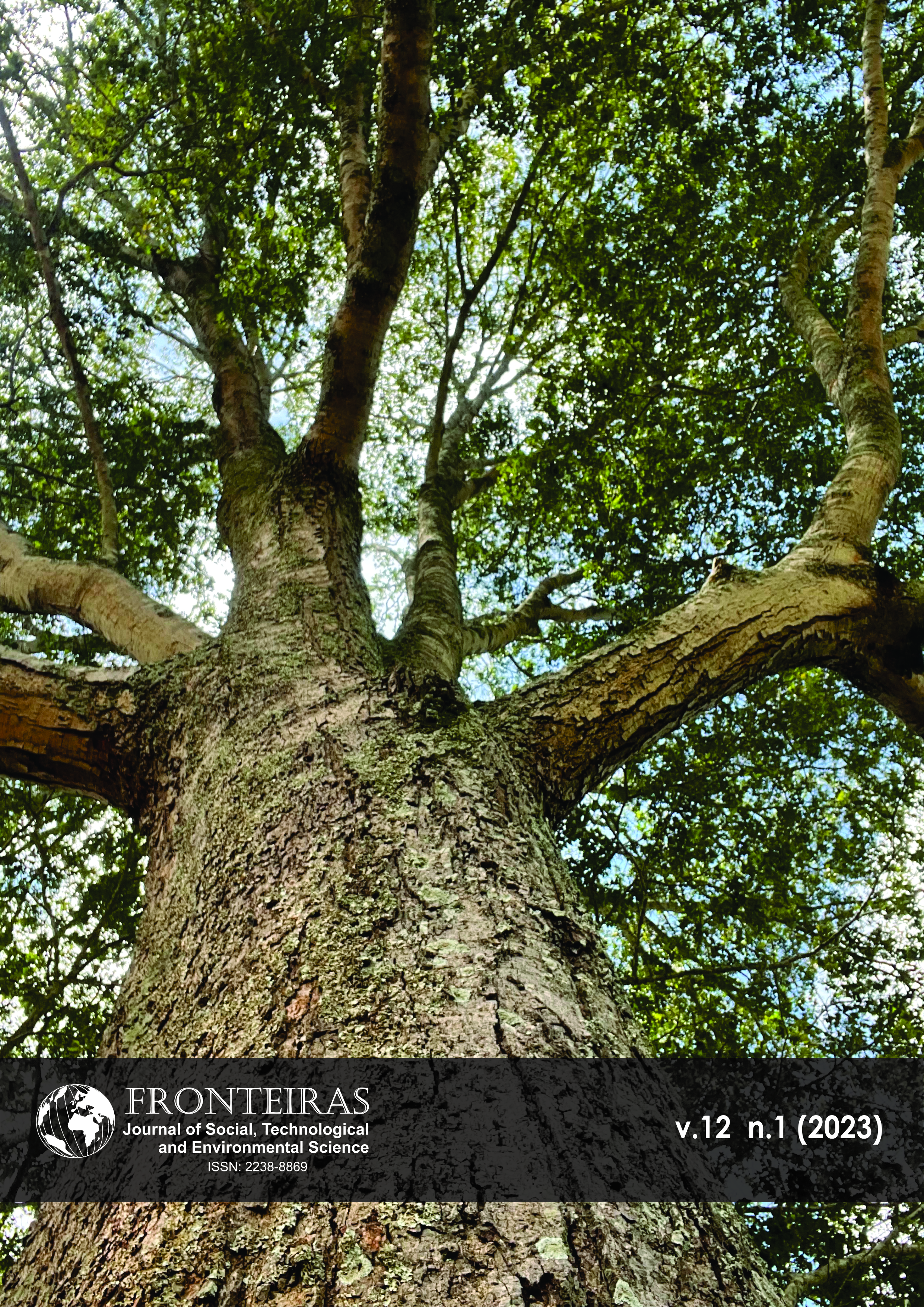English Proficiency Levels in Brazil and Argentina: A Question of Global Reputation
DOI:
https://doi.org/10.21664/2238-8869.2023v12i1.p287-301Keywords:
english language, proficiency level, world rankingAbstract
This study is based on the contemporary Brazilian Applied Linguistics has a dual purpose. First, to compare the results of English levels between Brazil and Argentina, according to the World Ranking of English Proficiency Index, from 2011 to 2021. Second, showing these results to understand why Argentina achieves much more satisfactory positions in English proficiency than Brazil. It is a quantitative research method that tries to collect quantifiable information for statistical analysis of the data sample (LUDKE & ANDRÉ, 2007), combined with bibliographical research. The sample comprised twelve reports of proficiency levels in English as a second language, prepared by the English First Proficiency Index. The present study concluded that the proficiency of English level in Brazil remains in low-level categories. This result has had considerable implications for missing the opportunity to share and disseminate ideas, engage people from different career areas and, above all, to always be one step ahead in a hyper-connected world.
References
BRITISH COUNCIL: Learning English in Brazil Understanding the aims and expectationsof the Brazilian emerging middle classes. 1st Edition | São Paulo. 2014.
CAMBRIDGE ESOL. Examples of Speaking Performance at CEFR Levels A2 to C2. University of Cambridge ESOL Examinations. Research and Validation Group. April, 2009.
CONSOLO, Douglas A. Avaliação da proficiência linguístico-comunicativa-pedagógica do professor de línguas: operacionalização de construto no Exame de Proficiência para Professores de Língua Estrangeira (EPPLE). Projeto trienal de pesquisa. São José do Rio Preto: UNESP, 2011.
DIAS, Mauricio. Sete décadas de história: Sociedade Brasileira de Cultura Inglesa. Rio de Janeiro, Sextante Artes, 1999.
EPI, EF. Relatórios EF-EPI (English Proficiency Index). EF Education First. Edições 2011-2019. Disponível em: <https://www.ef.com.br/epi/downloads/> Acesso em: 2020.
JORDÃO, C. M. O professor de língua estrangeira e o compromisso social. In: CRISTOVÃO, V. et al (Orgs.) Construindo uma comunidade de formadores de professores de inglês. Londrina, 2005.
LE BRETON, Jean-Marie. Reflexões anglófilas sobre a geopolítica do inglês. In: LACOSTE, Y.; RAJAGOPALAN, K. (orgs.) A Geopolítica do Inglês. São Paulo: Parábola, 2005, p. 12-26.
LENNON, P. Investigating Fluency in EFL: a Quantitative Approach. Language Learning, v. 40, 1990, p.387-417.
_________. Implementing the lexical approach: Putting theory into practice . Hove: Language Teaching Publications, 1997.
LITTLEWOOD, W. T. Communicative language teaching. Cambridge: Cambridge University Pr, 2011.
_________. (2000). Teaching Collocation. London: Commercial Color Press plc. LUOMA, S. (2004). Assessing speaking. Cambridge: Cambridge University Press.DOI: https://doi.org/10.1017/CBO9780511733017.
KAMHI STEIN LD (2009). Teacher preparation and nonnative English-speaking educators. In: Burns A, Richards JC (eds) The Cambridge Guide to Second Language Teacher Education. Cambridge: Cambridge University Press, 91–101.
KNIGHT, J. Cinco verdades sobre internacionalização. Revista Ensino Superior Unicamp, 2012. Disponível em: https://www.revistaens inosuperior.gr.unicamp.br/international-higher-education/cinco-verdades-a-respeito-da-internacionalizacao. Acesso em: 13 fev. 2023.
KRASHEN, S. D. Principles and practice in second language acquisition. Oxford: Pergamon, 1982.
MATEUS, Elaine F. Educação contemporânea e o desafio da formação continuada. In: GIMENEZ, Telma (Org) Trajetórias na formação de professores de línguas. Londrina: Editora UEL, 2002. p. 3-14.
MEGALE, A. Educação bilíngue no Brasil. Organização: Edição: Richmond. Fundação Santillana, 2019.
MELMAN, C. Imigrantes – Incidências subjetivas das mudanças de língua e país. Trad. Rosane Pereira. São Paulo: Escuta, 1992.
MOITA LOPES, L. P. (Org.) Discursos de identidades: discurso como espaço de construção de gênero, sexualidade, raça, idade e profissão na escola e na família. Campinas: Mercado Letras, 2003.
NAKATA, Y.(2010). Improving the classroom language proficiency of non-native teachers of English: What and how? RELC Journal, 41(1), p. 76-90.
PAIVA, V. L. M. Caos, Complexidade e Aquisição de Segunda Língua. In: PAIVA, Vera L.M.O.; NASCIMENTO, M. (org). Sistemas adaptativos complexos: língua(gem) e aprendizagem. Belo Horizonte: Faculdade de Letras/FAPEMIG, 2009.
PAIVA, V.L.M.O. (2003). A LDB e a legislação vigente sobre o ensino e a formação de professor de língua inglesa. In: STEVENS, C.M.T e CUNHA, M.J. Caminhos e Colheitas: ensino e pesquisa na área de inglês no Brasil. 2003. Brasília: UnB, p.53- 84.
RAJAGOPALAN, K. A geopolítica da língua inglesa e seus reflexos no Brasil. In: LACOSTE, Y.; RAJAGOPALAN, K. (orgs). A Geopolítica do inglês. São Paulo: Parábola Editorial, 2005.
Resoluciones N.° 2440-MEIGC/18 y N.° 1345-MEIGC/19. Disponível em: https://buenosaires.gob.ar/cursos-extracurriculares-de-lenguas/cursos-de-ingles-para-docentes. Acesso 20/06/2022.
RICHARD, J. C. & RODGERS. Approaches and Methods in Language Teaching. Cambridge: Cambridge University Press, 1986.
SCARAMUCCI, M.V.R (1997). A valiação de rendimento no ensino aprendizagem de Português língua estrangeira. In: J. C. P. de Almeida Filho. Ed. Parâmetros atuais para o ensino de português língua estrangeira. Campinas, Brazil: Pontes Editores, 75-88.
___________. Avaliação: mecanismo propulsor de mudanças no ensino/aprendizagem de língua estrangeira. Contexturas, n. 4, p. 115-124,
1999/2000.
___________. Proficiência em LE: considerações terminológicas conceituais. In SIGNORINI, I.; OTTONI, P.; FIAD, R. S. (Org.). Trabalhos em Lingüística Aplicada, 36:11-22, Campinas, jul./dez., 2000.
__________. O professor avaliador. In: ROTTAVA, L.; SANTOS, S. S. (Orgs). Ensino e Aprendizagem de Línguas - Língua Estrangeira.Editora Unijuí, p. 47-64. 2006.
__________. The lexical competence of university students to read in EFL. In: DELTA, SÃO PAULO, V. 13, N. 2, 1997. Disponível em: <http://www.scielo.br>. Acesso em: 09 out. 2006.
___________. Avaliação da leitura em inglês como língua estrangeira e validade de construto. Calidoscópio, v. 7, n. 1, p. 30-48, 2009.
SEIDLHOFER, B. Closing a conceptual gap: the case for a description of English as a lingua franca. International Journal of Applied Linguistics, v. 11, n. 2, p. 33-58, 1999.
UNESCO. Relatório de monitoramento global da educação. Resumo, 2019: migração, deslocamento e educação: construir pontes, não muros.
V. CHANDRA SEKHAR R. A Brief Study of English Language Proficiency: Employability. English for Specific Purposes World, ISSN 1682-3257, www.esp-world.info, Issue 49, v.17, 2016.
Downloads
Published
How to Cite
Issue
Section
License
This journal offers immediate free access to its content, following the principle that providing free scientific knowledge to the public, we provides greater global democratization of knowledge.
As of the publication in the journal the authors have copyright and publication rights of their articles without restrictions.
The Revista Fronteiras: Journal of Social, Technological and Environmental Science follows the legal precepts of the Creative Commons - Attribution-NonCommercial-ShareAlike 4.0 International. 


